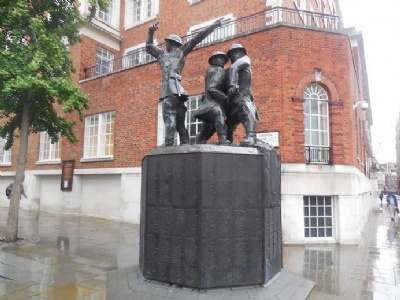London Blitz
The battle for Britain began in July 1940 when the german air force (Luftwaffe) began bombing military and industrial targets with the aim of crippling British defence capabilities. There was no deliberate bombing of cities initially, although it was inevitable civilians being killed. However, by the end of August 1940, some German planes lost course and accidentally dropped a few bombs on non-military and industrial targets in London. The damage was insignificant but this was still something that both Goering (the head of the Luftwaffe) and Hitler had banned so far. Britain responded by bombing Berlin the next day, the damage was insignificant, but the psychological effects were all the more tangible. Goering and Hitler could not let this pass unimpeded and therefore the bombing was extended to include not only military and industrial targets, but also civilian targets.
The first bombing took place on September 7, 1940, when hundreds of planes bombed London. Later that year and in the spring 1941, the bombings also included cities such as Coventry, Liverpool, Birmingham, Bristol, Glasgow, Hull, Sheffield, Belfast and others. Until the end of October 1940, the Germans continued to bomb military and industrial targets parallel with the bombing of British cities, particularly London. After that, when the intended invasion of mainland Britain was cancelled, the strategic bombings decreased while the bombing of cities continued and increased in both strength and intensity.
These terror bombings of British cities are called the Blitz and aimed to break down the British morale. If Britain could not be defeated militarily, it would be bombed into submission. They would be so demoralizing that the population would direct their discontent towards the current government and force it to resign. A new government would then hopefully be willing to enter peace negotiations with the Germans. But the bombing had rather the opposite effect, strengthening the morale and support of Churchill and his government. But for the residents of London, the bombing was a real test.
During the bombing, residents sought shelter in subways, others sought shelter in basements or improvised shelters, and children were sent north to the countryside. The bombings also caused widespread fires and huge material damage but the England was determined to fight on. The Germans were never really close to defeating the British. They were not sufficiently organised and Britain was never a real military priority. The British were also able to replace both pilots and aircraft to a much greater extent than the Germans.
The terror bombings also gave the British time and opportunity to repair the industries, airfields and other military installations that had previously been heavily bombed by the Germans. As the RAF was not defeated and it was not possible to force Britain into submission, the Germans were forced to stop the bombing in the spring of 1941. The last Blitz was carried out on May 21, 1941. The impending invasion of the Soviet Union prompted Hitler to displace the air forces eastward. Britain would be dealt with later after Soviet Union been defeated. During the eight-month Blitz, about 40,000 people were killed, London suffered 71 bombings.
Current status: Monument (2014).
Address: Sermon Ln, London EC4V 5EY.
Get there: Metro to St. Pauls or Mansion House stations.
Follow up in books: Holland, James: The Battle of Britain: Five Months That Changed History; May-October 1940 (2011).


Although the material damage was extensive, the buildings were rebuilt and repaired. No ruins were preserved as a form of memory but it is still possible to see shrapnel damage on several buildings. However, there are several memorial boards dedicated to the Blitz and there are several organizations that arrange guided tours of the Blitz, so-called Blitz walks.